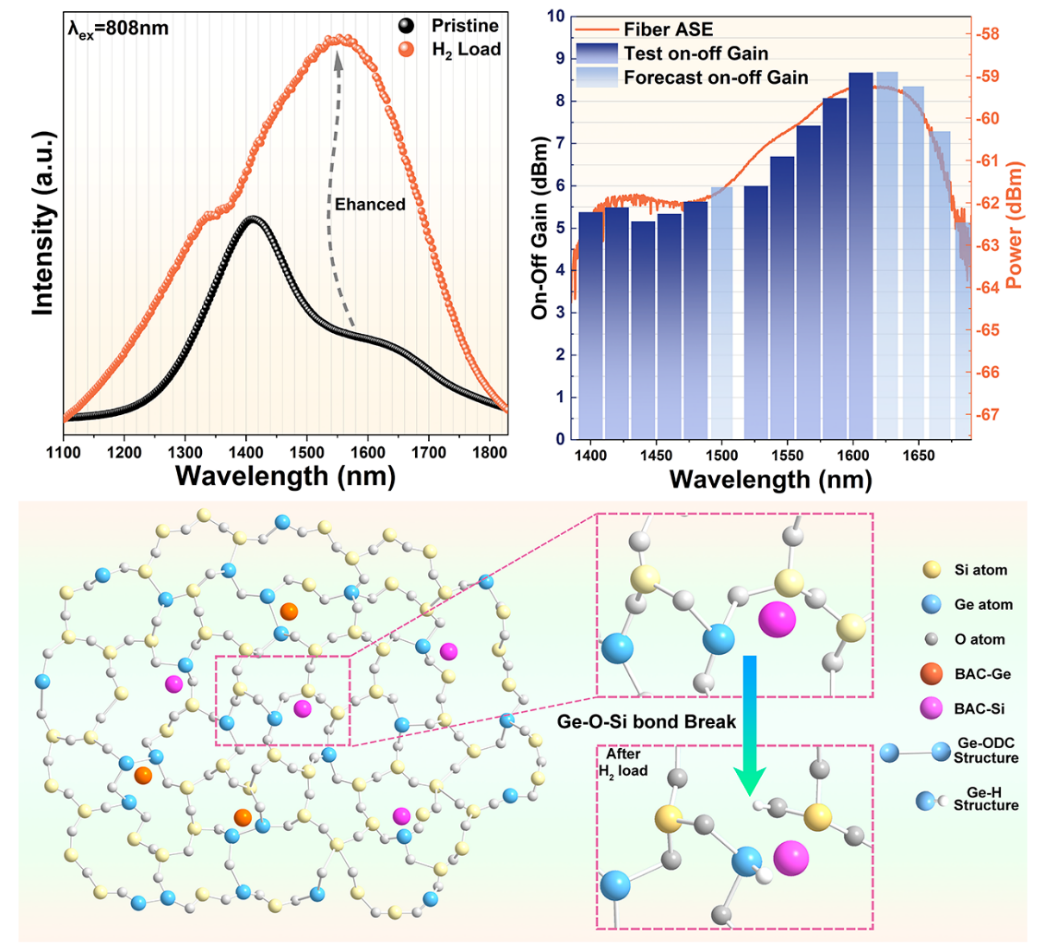
Researchers Make Progress in Expanding the Bismuth NIR Emission Band in Bi-doped Silica Glass and Fiber
With the exponential growth of data-driven technologies like artificial intelligence and cloud computing, the demand for ultra-wideband optical communication systems has surged. Current erbium-doped fibers, limited by their narrow amplification bandwidth (C-band: 1530-1565 nm), struggle to meet these escalating needs. Bismuth (Bi)-doped fibers, known for the broad near-infrared (NIR) emission bands (1350-1500 nm and 1600-1800 nm), have emerged as a promising alternative. However, the low efficiency in the critical 1500-1600 nm range and incompatibility with existing infrastructure have hindered its practical application.
Recently, a team led by Prof. HU Lili, from Shanghai Institute of Optics and Fine Mechanics, Chinese Academy of Sciences, has overcome these challenges by employing coordination engineering in bismuth/germanium (Bi/Ge) co-doped silica glass and fiber. They successfully achieved ultra-broadband NIR emission spanning the S-band to U-band, effectively bridging the gap between traditional bismuth active centers (BAC-Si and BAC-Ge). This study, entitled “Ultra-broadband Emission in Bi/Ge co-doped Silica Glass and Fiber via Bismuth Coordination Engineering”, was published in Advanced Optical Materials on February 3, 2025.
In this study, they used high-temperature and high-pressure reduction techniques to tailor the local coordination environment of bismuth ions, creating a new NIR luminescence center with a fluorescence peak at 1550 nm and a remarkable full width at half maximum (FWHM) exceeding 350 nm. Through multi-dimensional characterizations such as HRTEM, EXAFS and EPR, they revealed that the formation of Ge-H/Ge-D bonds in the glass network, and these Ge-H/Ge-D bonds stabilize the novel luminescence center of bismuth.
This study not only provides a new paradigm for the coordination engineering regulation of Bi-doped NIR materials, but also opens up an innovative path for the next generation of ultra-wideband optical fiber communication technology.
This work was supported by the National Key R&D Program (2020YFB1805902).
Contact: LI Xin
Advanced Laser and Optoelectronic Functional Materials Department,
Shanghai Institute of Optics and Fine Mechanics, CAS
Email: lixin5@siom.ac.cn

Figure. (Top) Emission spectra and gain profiles of Bi/Ge co-doped silica glass and fiber. (Bottom) Structural evolution of bismuth coordination environment driven by Ge-H/Ge-D bonds.
Article website: https://doi.org/10.1002/adom.202402261